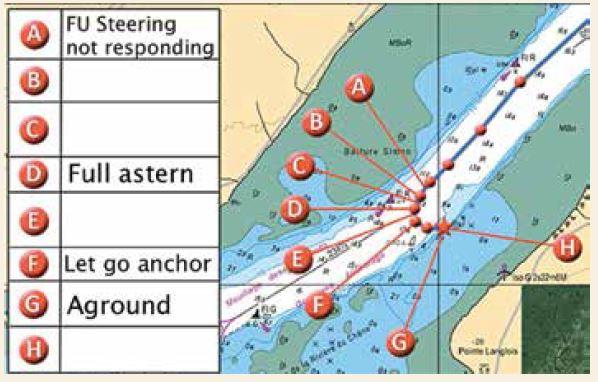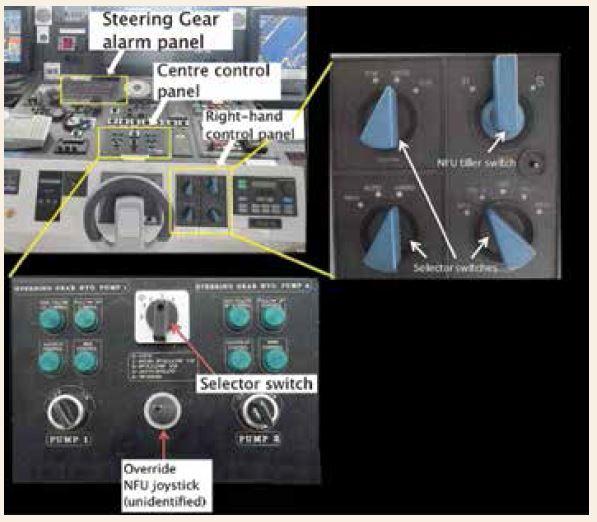201557 NFU to the rescue - or not
Edited from official TSB report M14C0045
As the vessel made way in restricted waters, the helmsman was at the main console using the wheel to steer the vessel in full follow-up (FU) mode. While on a course over-the-ground of 221° with the rudder amidship, an alarm light on the steering control alarm panel lit up and an audible alarm sounded on the bridge. The chief engineer, who was on the bridge, asked the OOW what the alarm was, and the OOW responded that it was the autopilot override alarm. Shortly after this exchange, the vessel started to veer to port, towards the south side of the river, and the helmsman reported that the helm was not responding. After the steering had been switched to non-follow-up (NFU) mode, the OOW, chief engineer, and helmsman each tried to use the NFU tiller switch on the right-hand control panel to move the rudder, but the rudder did not respond. They then tried toggling between steering modes using the switches on this same control panel, but the rudder still did not respond. The Master arrived on the bridge shortly after and also attempted to actuate the rudder using the NFU tiller switch on the right-hand control panel, but to no effect. He then ordered the OOW and the bosun to the forward mooring station for an emergency anchoring. Although the anchor was dropped soon afterward, the vessel nonetheless grounded on the SW side of the river.
On the centre console panel there is also a short black ‘override’ joystick that can be used to steer the vessel (NFU mode); however, on this vessel, it was not the practice to use this joystick. The joystick does not have an identification label, nor does it have a protective covering or any other locking feature to prevent accidental activation. Only a light touch of this override joystick is necessary to activate it and give steering control to the joystick while disabling all other means of steering in use. To reactivate the other means of steering after the override joystick has been activated, an operator must press the override reset button on the steering gear alarm panel, which resets the steering control system to its initial condition.
The official investigation found that, among other things:
- Steering control from the steering wheel was likely disabled when the unprotected override joystick was inadvertently touched.
- The bridge crew was not adequately familiarised with the vessel’s steering control system and did not know how to regain steering control after the override alarm activated.
Other lessons learned
- If critical bridge systems, such as steering gear control systems, are not designed and arranged to be straightforward and intuitive with safeguards to minimise human error, there is a risk that an operator will not be able to respond quickly and effectively in the event of an emergency.
- If crew members are not familiarised with all aspects of the operation of safety critical equipment, such as the vessel’s steering control system, there is a risk that they will not have the knowledge required to operate the system proficiently or regain control in the event that it is lost.
Editor’s note: In many accident reports where FU steering is lost, crew are not familiar enough with their steering systems and NFU is left untried. In this instance, the bridge team had the right reflex to try the NFU – but not the correct joystick. The only NFU that could have saved them was the override joystick on the centre panel – the one they didn’t try. Unfamiliarity with the equipment and lack of identification were the primary contributing factors. The fact that the override joystick was unprotected could also be viewed as an unsafe condition.


